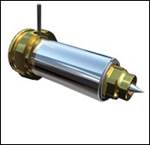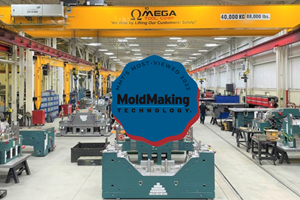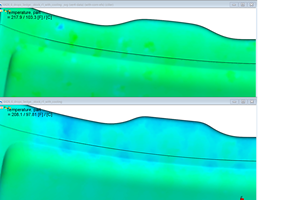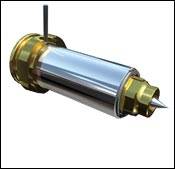Cold Runner Manifold with Center Gate Provides Easy Operation, Maintenance
A cold runner manifold system for thermoset injection molds has been developed to overcome the challenges that come with using cold runners.
A cold runner manifold system for thermoset injection molds has been developed to overcome the challenges that come with using cold runners. Binding, uneven flow and premature washout of mold contours are eliminated thanks to center gating with less surface obstruction, providing better flow and thus, a better quality part.
The process was designed by MoldMaking Technology’s 2007 Large Shop Leadtime Leader Chicago Mold Engineering Co. Inc. (CME, St. Charles, IL)—a manufacturer of multi-cavity injection molds and compression molds for the thermoset and thermoplastic industries for the past 62 years. According to CME Sales Manager Don Mazurek, “the unique characteristics of thermoset molding compounds and their increased popularity for automotive lighting reflectors mandated improvements on traditional cold runner systems. The system must keep the material evenly cooled to maintain its integrity until it reaches the heated mold cavity. Demanding applications like automotive reflector molds and thermoset appliance parts require flawless performance.”
Building the Manifold
With nominal expansion of 0.007” per inch in operation, binding can occur, shutting down valuable mold operation. To prevent binding, a variety of hardened steels strategically comprise the mold, including H13, 420 stainless steel, 4140, S7, and hot rolled steel. All surfaces are precision machined to tolerances of just tenths of a thousandth to ensure reliability. “Throughout the mold, any compromises in quality would be false economy in the critical performance of the system,” explains Mazurek.
The manifold may be built solid or split, with fully machined, tapered reduction flow channels for improved material flow. Solid manifolds are preferred because there is less chance of leakage from the high injection pressure. Removable inserts simplify cleanout. The water cooled manifold is placed into a tapered manifold pocket. During operation, the manifold is “pre-loaded” to ensure constant pressure during injection.
The Addition of Nozzles
CME also developed hardened S7 nozzles with stainless steel water jackets that are bolted together and have double O-rings to ensure they are leakproof. Mazurek points out that “while many mold builders weld the nozzles together, these nozzles can be disassembled and cleaned if and when they plug up.” The top of the nozzle has a spherical mating surface to shut off with the inserts that are bolted into the bottom of the manifold. Material flow may be easily adjusted by the hole diameter in the nozzle—depending upon the part size and the amount of space around the optic insert in the specific case of reflector molds. Operating temperature of the insert is one of the determining factors when sizing the nozzles.
Finally, a taper is added to the front of the nozzle, forming the gate. Material passes through the manifold to the nozzles, which are also water cooled inside the hot mold. A small insert located at the bottom of the manifold seals with the nozzle and maintains its seal because of the pre-load on the nozzle and the design of the insert. When the material hits the hot insert, it flows like water until the part is full. Then the gate cutter and any core pins are advanced forward to punch the holes and cut off the gate. Once the part is set, the mold opens, the part ejects along with a small sprue and the mold is ready for the next cycle.
Related Content
Advances in P20 Steel Potentially Eliminates Need for Stress Relieving After Rough Cutting
Omega Tool Corp. compares conventional, new P20 grades side by side in production fascia tools, finds no downside.
Read MoreCT Scanning Helps Micro Molder Reduce Cost of First Article Inspections
CT scanning services performed by 3D ProScan, a division of NyproMold Inc. provides MTD Micro Molding with accurate, high-resolution internal and external measurements performed about seven times faster and at significant cost savings.
Read MoreThe Trifecta of Competitive Toolmaking
Process, technology and people form the foundations of the business philosophy in place at Eifel Mold & Engineering.
Read MoreQuickly Troubleshoot New Molding Defect with Moldfilling Software
SyBridge Technologies analyst compares original, new Moldflow process simulation results, solves molding defect without tool needing to be taken out of production.
Read MoreRead Next
How to Evaluate Hot Runner Nozzless
The way to choose the right hot runner nozzle is to evaluate the entire molding system first.
Read MoreReasons to Use Fiber Lasers for Mold Cleaning
Fiber lasers offer a simplicity, speed, control and portability, minimizing mold cleaning risks.
Read MoreHow to Use Strategic Planning Tools, Data to Manage the Human Side of Business
Q&A with Marion Wells, MMT EAB member and founder of Human Asset Management.
Read More









_300x250 3.png;maxWidth=300;quality=90)















